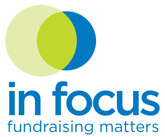Recent Posts
- The Secret Sauce: Strategies & Tactics to Engage Institutional Funders
- What Are Your Donors Saying When They Go Quiet? And How Should You Respond?
- Maximizing Year-End Giving: Strategies for a Successful Fundraising Campaign
- Navigating 2024’s Unique Year-End Fundraising Landscape
- Latest Giving USA Data
- How to Flex Your Case for Support to Raise More Money
- Maximizing Potential of Donor-Advised Funds: Strategies You Need To Know
- Major Donors: Cultivating Relationships & Forging Strong Ties
What Are Your Donors Saying When They Go Quiet? And How Should You Respond?
Published: October 3, 2024
Clients often ask us “What do you think is going on with this donor? They won’t respond to my emails [or calls/outreach]!”
While I don’t have mind reading capabilities [yet!], my years in fundraising have given me a glimpse into what your donors may be trying to say when they aren’t responsive. In this post, I share some examples of what they may be thinking, and a few insights that may help you figure out how to re-engage them.
Why Donors Might Go Quiet: Common Scenarios
- The first thing your donors may be saying with their silence is “I’m busy and can’t focus on you right now.” Our lives are incredibly busy, and while you may be on a deadline or think you’re close to getting a commitment from them, your donor/prospect is likely juggling a lot and is just not able to give you an answer.
- Another possibility is “I’m just not that into you.” Donors these days are more quick to leave one nonprofit to support another than ever before. According to 2023 Fundraising Effectiveness Project data -- a great resource of individual donor fundraising trends gathered from GivingTuesday and the Association of Fundraising Professionals’ Growth in Giving data -- donor retention continued to drop last year. In a May 2024 Candid review of the data, “retention rates declined across all donor sizes, but the largest percentage declines were among major ($5,000+) and supersize ($50,000+) donors. These donors’ retention rates remained more than double that of donors who gave less than $100 (65.8% and 67.9%, compared with 31.4%).” So, while donors who give more are often sticking with nonprofits and continuing to support them, there are still a lot of folks who aren’t renewing gifts for a number of reasons.
- At times, donors may be saying “I’m not seeing any impact from our contributions!” If your nonprofit isn’t communicating the outcomes that donations have on those you serve, it can lead donors to disengage. So while your nonprofit may be connecting with and supporting more people than ever, if you aren’t sharing those stories, sending details to your funders, and highlighting the role you play in the change you seek, your donors may be left wondering why they should continue to give.
- Last, when you have a lot on your plate (and I know you do!), doing those ‘soft’ touchpoints to check in with donors with a quick call, invite them for coffee, or send them an article may fall off your list. When that happens, your donors may feel like they only hear from you when you’re ready to ask for support. That lack of stewardship sometimes leads donors to think “I am not your ATM!” and decide to step back. The challenge here, of course, is that your limited time can lead donors to shift their priorities, which in turn means you’ve got to double down and find new major donors to cultivate and solicit. Yes, we know - it’s tough out there.
Effective Strategies to Re-Engage Unresponsive Donors
So, what should you be doing? Above I mention a few ways to give your donors more attention and also give them some breathing room when needed, here are a few additional next steps:
- Send personalized messages acknowledging their past support, expressing understanding of their schedule, and mentioning that you’d like to reconnect when they’re available. No arm-twisting needed.
- Try Different Channels. If you’ve been emailing, consider a phone call or a handwritten note. You could even send a text or a message through social media, depending on your donor's preferences.
- Involve a Mutual Contact. If someone in your organization or network has a good relationship with the donor, ask them to help re-establish the connection.
- Reflect on previous communications and donations to determine if they tend to go quiet sometimes, and then come back into the fold. There may be clues as to why they’re less engaged now, such as changes in their interests or circumstances or if this is just their pattern.
- Instead of immediately asking for support next time you connect, provide something of value, like an update on the impact of their previous donations, an invitation to an interesting event, or info related to their interests.
- Be Persistent but Respectful. Continue to follow up periodically but respect their space. It’s important not to come across as pushy.
- If your donor remains unresponsive, it may be time to reassess your approach and strategy. Consider whether there are other ways to engage them or if your focus should shift to other donors/prospects.
Share Your Experiences: How Do You Handle Donor Silence?
I’d love to hear your take on why donors go quiet and how you’ve dealt with it. Drop me an email or find me on LinkedIn with your insights!
